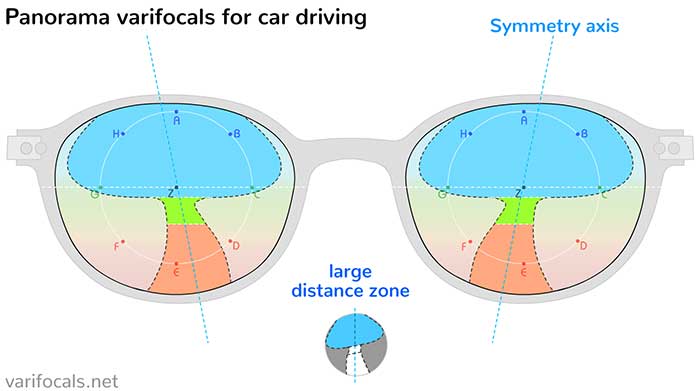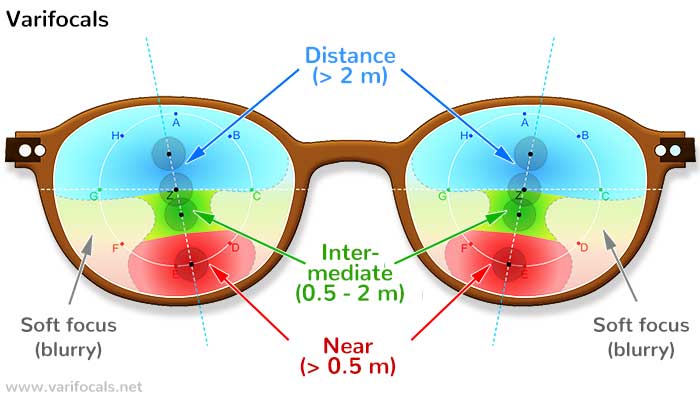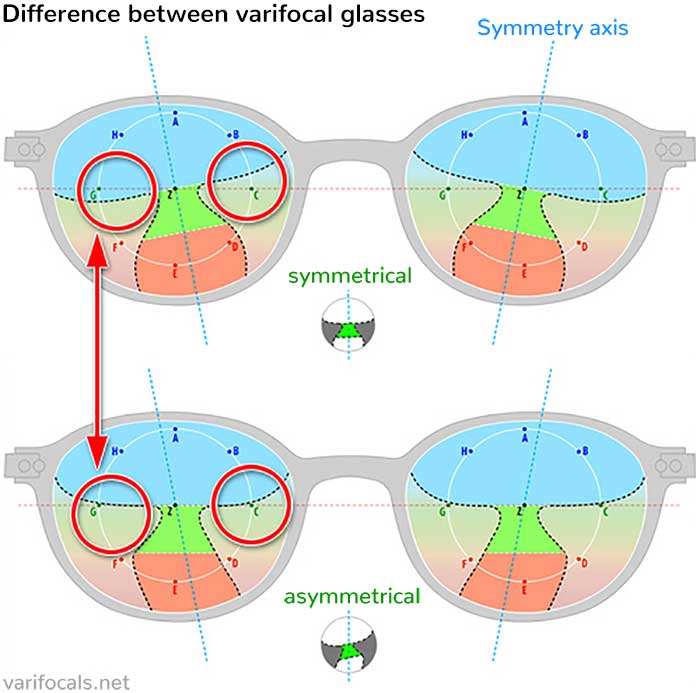Panoramic Progressive Lenses
Are there special progressive lenses with panoramic glasses? Yes and no, because the width of the visual area to the left and right also depends on the degree of visual impairment. See more: when do you need progressive lenses? However, it is also a matter of the design of the lens.

Those who wear progressive lenses are often familiar with the problem: The field of vision of the progressive lens is limited. It is logical for the top and bottom: in the area of the bottom lens, one can only see clearly up close, in the upper half, one can see well at a distance. However, the limitation also applies to the horizontal zones. When looking from the corners of the eyes, one notices that the visual image becomes blurry.
Warning: include(templates/adsense-in-article.php): Failed to open stream: No such file or directory in /usr/www/users/brilleu/varifokals-net/panoramic-varifocals.php on line 29
Warning: include(): Failed opening 'templates/adsense-in-article.php' for inclusion (include_path='.:/usr/local/lib/php/') in /usr/www/users/brilleu/varifokals-net/panoramic-varifocals.php on line 29
The reason is simple: The smooth transition zones mainly ensure that the lens looks uniformly curved and fits well into the frame of the glasses.
Meanwhile, some lens manufacturers have developed special glasses where distance vision is particularly well optimized (e.g., Zeiss DriveSafe). This type of progressive lens can also be called "panoramic progressive lenses."
The stronger the nearsightedness and the stronger the presbyopia, the greater the dioptric distance that needs to be overcome in the progression zone (intermediate distance). This is achieved through the curvature of the lens. In the outer areas, these "unbends on the lens" are then unified again, forming a uniform outer edge of the lens. In a panoramic progressive lens, the progression zone is relatively small, which means that with some practice, you can quickly and easily focus on intermediate distances (0.5 to 2 meters) (by knowing exactly how to tilt your head here).
Characteristics of the Progressive Lens
A progressive lens is a type of multifocal glasses. The special feature lies in the unique lenses, which correct not only refractive visual impairments at one distance but multiple distances simultaneously. The "refractive visual impairments" include commonly occurring vision problems:
- Nearsightedness
- Farsightedness
- Presbyopia
- Astigmatism
A progressive lens becomes relevant when nearsightedness (often congenital) is accompanied by age-related presbyopia. In such cases, distance vision is not clear (due to nearsightedness), and near vision also becomes increasingly challenging (due to presbyopia). The progressive lens can correct both issues thanks to its unique lens design.

Top: Distance vision (over 2 meters);
Middle: Intermediate distances (0.5 to 2 meters), e.g., computer screen;
Bottom: Near vision (less than 0.5 meters), e.g., reading a book;
the lateral zones on the left and right are smoothly curved and often lead to a slightly blurry image
Lens design becomes better and better
The progressive lens manufacturers (e.g. Zeiss, Rodenstock, Essilor) are researching new "lens designs" that differ primarily in terms of the size / extent of the progression zone. As a result, different types of progressive lenses are now available on the market. Please click for more information:
- Simple standard varifocals (symmetrical axis, cheap)
- Varifocals with asymmetrical axis (better lens design)
- Panoramic varifocals for car driving
- Workspace varifocals - middle distance
- Digital varifocals for smartphones, tablets etc.

